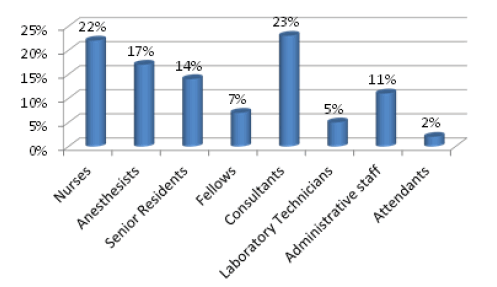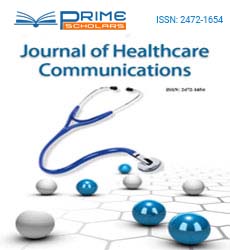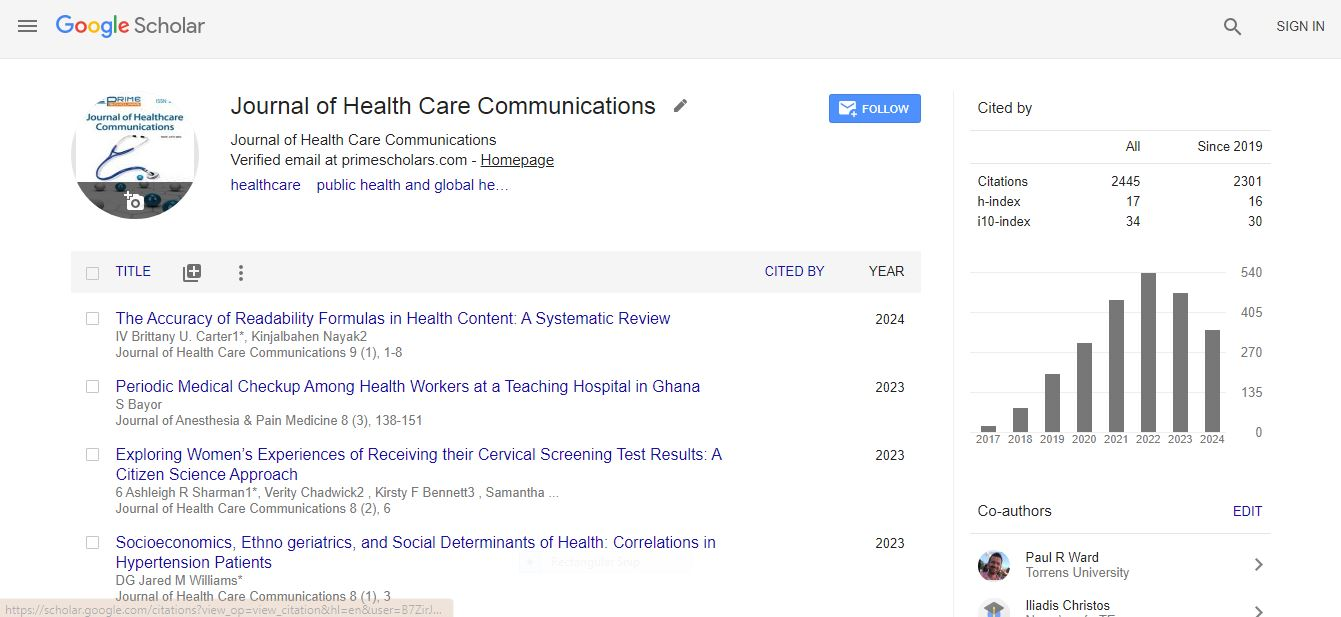Research Article - (2025) Volume 10, Issue 1
Breaking the Silence: Uncovering the Prevalence and Sources of Workplace Bullying among Surgical Residents
Seyoum Kassa*,
Fanuel Anteneh,
Abebe Bezabih and
Dereje Gullilat
1Department of General and Cardiothoracic Surgeon, Addis Ababa University, Addis Ababa, Ethiopia
2Department of General Surgeon, Debremarkos University, Amhara Region, Ethiopia
*Correspondence:
Seyoum Kassa, Department of General and Cardiothoracic Surgeon, Addis Ababa University, Addis Ababa,
Ethiopia,
Email:
Received: 01-Aug-2023, Manuscript No. IPJHCC-23-17220;
Editor assigned: 04-Aug-2023, Pre QC No. IPJHCC-23-17220 (PQ);
Reviewed: 18-Aug-2023, QC No. IPJHCC-23-17220;
Revised: 10-Jan-2025, Manuscript No. IPJHCC-23-17220 (R);
Published:
17-Jan-2025, DOI: 10.36648/2472-1654.10.1.58
Abstract
Background: Workplace bullying is a prevalent issue in healthcare environments worldwide, and surgical residents are particularly vulnerable to such behavior. This study aimed to determine the prevalence and nature of workplace bullying among surgical residents at Tikur Anbessa specialized Hospital, Addis Ababa, Ethiopia.
Methods: A cross-sectional study was conducted from August 15, 2021, to September 15, 2021. The prevalence of bullying was measured using both a definition of workplace bullying and the revised Negative Acts Questionnaire (NAQ-R). The sources of bullying, barriers to reporting, and outcomes of formal reporting were also examined.
Results: Out of 194 surgical residents, 158 (81%) responded to the survey. The study found that 60.8% of respondents reported having been bullied to some degree, and 82.1% witnessed bullying of surgical colleagues in the last 12 months. The most common negative behaviors experienced were being ordered to do work below their level of competence and having opinions ignored. Consultant surgeons and nurses were the most common sources of bullying. Only 3.1% of those who reported being bullied made a formal complaint, with the most common reason for not reporting being that nothing would change.
Conclusions: The study reveals that workplace bullying is a significant problem among surgical residents at Tikur Anbessa specialized hospital, Ethiopia. The findings suggest the need for further research to explore the problem in-depth and devise effective prevention strategies. Identifying the sources of bullying and barriers to reporting is crucial.
Keywords
Workplace bullying; Surgical residents; Source of bullying; Prevalence
Introduction
Workplace bullying is a serious issue that can have negative consequences on healthcare providers' well-being and patient care. Workplace bullying is particularly prevalent among surgical residents due to their archical nature of the surgical training system and high-stress working environments. Despite the significant negative impact of workplace bullying, its prevalence, nature, sources, and reporting among surgical residents in Ethiopia have not been extensively studied. Previous studies have shown that workplace bullying is a pervasive issue in healthcare settings worldwide. In the UK, a survey of NHS community trust staff found that 28% reported experiencing bullying [1]. Similarly, workplace bullying has been reported among junior doctors in the UK and New Zealand surgeons [2-6]. Intimidation and harassment in surgical training have also been reported in various countries [7,8]. Given the importance of understanding the prevalence, nature, sources, and reporting of workplace bullying among surgical residents, this study aimed to investigate workplace bullying among surgical residents at Tikur Anbessa Hospital, Addis Ababa, Ethiopia. To the best of our knowledge, this is the first study of its kind in Ethiopia. To address this gap in the literature, a cross-sectional study was conducted among surgical residents at Addis Ababa, Ethiopia. The study aimed to collect data on the prevalence of workplace bullying, the nature and sources of bullying, and the reporting of workplace bullying among surgical residents. The study drew on previous research on workplace bullying and its impacts on healthcare providers, including the stressors-emotion model of counterproductive work behavior (Spector and Fox, and the concept of bullying and harassment at work. The results of this study can inform interventions to reduce workplace bullying among surgical residents and improve the work environment. The study can also contribute to a better understanding of the prevalence and nature of workplace bullying among healthcare providers in Ethiopia and globally.
Materials and Methods
Study Design
This study utilized a cross-sectional study design.
Study Period
The study was conducted from August 15, 2021, to September 15, 2021.
Source and Study Population
The source population for this study was all residents currently attending their training, and the study population was current surgical residents. There are 107 general surgery, 39 neurosurgery, 17 urology, 18 pediatric surgery, and 13 plastic surgery residents attending their training now. Out of the 194 surgical residents, all were included in the study.
Eligibility Criteria
All surgical residents from general surgery, neurosurgery, and urology, pediatric and plastic surgery were included in the study.
Sampling Technique and Procedure
The study used a convenience sampling technique, and all surgical residents of all post-graduate years were included in the study.
Data Collection Tool and Procedure
The study utilized a self-administered electronic questionnaire that was based on the Negative Acts Questionnaire-Revised (NAQ-R). The questionnaire had four parts: The first part collected demographic data of the study subjects, the second part contained NAQ-R questions to objectively assess the problem to be studied, the third part used Einarson's definition of workplace bullying to subjectively assess if the participants were victims of bullying, and the final part of the questionnaire contained items about reporting an act of workplace bullying. The overall NAQ-R mean score was calculated, and residents with a score lower than 33 were considered not bullied, residents with a score between 33 and 45 may be considered occasionally bullied, and residents who scored above 45 were considered victims of workplace bullying.
Operational Definition
Workplace bullying was defined as situations where an employee is persistently exposed to negative and aggressive behaviors at work primarily of a psychological nature with the effect of humiliating, intimidating, frightening, or punishing the target, according to Einarsen.
Data Quality Management
Data quality assurance was in place during designing the questionnaire, data collection, data entry, and analysis. The data were collected and analyzed by a separate person other than the principal investigator, and a pilot study on a similar study setting was conducted to ensure quality data.
Study Variables
Dependent variables
• Prevalence and nature of workplace bullying.
• Types of bullying.
• Sources of bullying.
Independent variables
• Age
• Sex
• Unit of surgery department.
• Post-graduate year.
Data Analysis and Processors
The data collected were coded, categorized, entered, and analyzed using IBM SPSS statistics version 22.0 by the author. The data were summarized in frequency tables, percentages, and diagrams as appropriate. Different statistical analyses were used, including univariate and multivariate analysis, and the determination of statistical significance was made using Chi-square test.
Results
Participants
Out of the 194 surgical residents, 158 completed the survey, resulting in a response rate of 81%. Of the respondents, 123 (77.8%) were males, and 35 (22.2%) were females (Figure 1). The mean age of the participants was 29.47, with a standard deviation of 1.921. The majority of the participants were from the general surgery department (55.7%, n=88), followed by neurosurgery (17.1%, n=27), urology (9.5%, n=15), pediatric surgery (9.5%, n=15), and plastic surgery (8.2%, n=13) (Table 1).

Figure 1: Participants.
|
|
Never n
|
%
|
Yes, to some degree n
|
%
|
Yes weekly or daily n
|
%
|
|
Overall
|
61
|
38,6
|
96
|
60,8
|
13
|
8,2
|
|
Male
|
49
|
40,2
|
73
|
59,8
|
7
|
5,7
|
|
Female
|
12
|
34,3
|
23
|
65,7
|
6
|
17,1
|
|
General surgery
|
29
|
34,9
|
54
|
65,1
|
12
|
14,5
|
|
Neurosurgery
|
15
|
51,7
|
14
|
48,3
|
1
|
3,4
|
|
Pediatric surgery
|
8
|
50
|
8
|
50
|
0
|
0
|
|
PRS
|
8
|
61,5
|
5
|
38,5
|
0
|
0
|
Table 1: Prevalence of workplace bulling.
Prevalence of Negative Behavior (NAQ-R Questionnaire)
When assessing the prevalence of bullying using the NAQ-R questionnaire, all participants reported experiencing at least one negative behavior in the last 12 months. Furthermore, all participants reported experiencing negative acts on a weekly or daily basis. The most prevalent negative behaviors related to work-related bullying (items 1-7). The highest reported behavior was "being ordered to do work below your level of competence" (n=142, 89.9%). This was followed by "having key areas of responsibility removed or replaced with more trivial or unpleasant tasks" (n=123, 77.8%) and "someone withholding information which affects your performance" (n=119, 75.3%).
Among the person-related negative behaviors (items 8-19), the most commonly experienced behavior was "having opinions ignored" (n=128, 81%). This was followed by "being shouted at or being the target of spontaneous anger" (n=120, 75.9%), "being given tasks with unreasonable target or deadlines" (n=97, 61.4%), "repeated reminders of your errors or mistakes" (n=89, 56.3%), and "excessive monitoring of your work" (n=89, 56.3%). The majority of participants (n=127, 80.4%) also reported being exposed to an unmanageable workload.
Prevalence of Workplace Bullying and Witnessed Bullying
In the second method of assessing workplace bullying, the study found that 60.8% (96) of the respondents reported being bullied to some degree in the last 12 months. Approximately eight percent (n=13) reported experiencing bullying on a weekly or daily basis during that period. The prevalence of bullying was higher among general surgery residents () and urology residents () compared to residents in other units.
A majority of the participants (n=131, 82.9%) reported witnessing a colleague being bullied in the last 12 months (Figure 2).

Figure 2: witnessed bulling.
Sources of Bullying
Figure 3 provides a summary of the sources or perpetrators of negative behavior in the workplace. The main sources of workplace bullying reported by the participants were consultants, accounting for 22.9% of the cases, followed by nurses at 22.3%. Anesthetists accounted for 16.6% of reported cases, while senior residents were identified as perpetrators in 13.6% of the instances.

Figure 3: Source of bulling.
Reporting of Bullying
A significant proportion of respondents, more than ninety-six percent (n=93), who reported being bullied did not formally report the incidents. Among those who chose not to report, the majority believed that nothing would change (n=38, 41.1%) or that the situation might worsen (n=17, 17.8%).
Some respondents felt that the seniority of the perpetrator would serve as a barrier to reporting (n=13, 14%), while others did not want to be perceived as troublemakers (n=10, 10.9%). Of the three subjects who did report bullying formally, 66% (n=2) reported that effective action was taken, while the remaining 34% (n=1) experienced no change in the situation.
Discussion
This study aimed to investigate the prevalence and sources of workplace bullying among surgical residents at Tikur Anbessa Specialized Hospital. The results showed a high level of workplace bullying, with a prevalence of 60.7% using the definition of workplace bullying and 60.8% using the Negative Acts Questionnaire-Revised (NAQ-R).
These rates are higher than those reported in previous studies conducted in Australia (38%-47%), the United Kingdom (20%), South Africa (48%), and China (44.6%).
Interestingly, there was no significant association between demographic characteristics and NAQ-R score, which differs from the Australian study that found more females experienced at least one negative behavior. However, the reasons for this difference are unclear and require further investigation. The most common negative behaviors reported in this study were work-related negative behaviors, which is similar to the Australian study. The majority of respondents reported witnessing a colleague being bullied, highlighting the need for interventions that target not only the victims of workplace bullying but also bystanders who witness such behaviors.
The study found that consultants and nurses were the most common sources of workplace bullying, followed by anesthetists and senior residents. This is consistent with previous studies conducted in South Africa and Australia. The reasons for this finding are complex and may stem from a variety of factors, including power dynamics, communication breakdowns, and high-stress environments. It is also possible that negative feedback may be construed as bullying, and some surgeons may even consider intimidation and harassment as functional tools in surgical education.
Bullying is an under reported problem in this study, with only 3.1% of respondents making a formal complaint to hospital administration or other authorities. This is consistent with other studies on workplace bullying among doctors. The most common reasons for not reporting included the belief that nothing would change or that it would make the situation worse.
This highlights the need for interventions that address the barriers to reporting and create a safe environment for residents to report workplace bullying.
This study has several limitations, including the reliance on self-report questionnaires, which may introduce selection bias, with those who have experienced bullying more likely to respond. The sample size is also small, and the study population did not include consultants, which may limit the generalization of the findings. Additionally, the study did not assess the impact of workplace bullying on the subjects, which is an important area for future research.
In conclusion, this study highlights the high prevalence of workplace bullying among surgical residents at Tikur Anbessa Specialized Hospital. The most common sources of bullying were consultants and nurses, and work-related negative behaviors were the most frequently reported negative behaviors. The low rate of formal reporting highlights the need for interventions that address the barriers to reporting and create a safe environment for residents to report workplace bullying. Future research should focus on developing effective prevention and intervention strategies that promote a healthy work environment and address the impact of workplace bullying on the well-being and performance of surgical residents.
Conclusion
This study found a high prevalence of workplace bullying among surgical residents in Tikur Anbessa Hospital, with 60.8% of respondents reporting having experienced bullying to some degree. The most common negative behaviors reported were being ordered to do work below their level of competence and having opinions ignored. Consultant surgeons and nurses were identified as the most common sources of bullying, and fear of retaliation and the belief that nothing would change were the most common reasons given for not reporting.
These findings highlight the need for interventions to address workplace bullying among surgical residents. It is important to create a supportive work environment that prioritizes the well-being of healthcare providers in order to improve patient care. Interventions could include training programs for healthcare providers on how to recognize and report workplace bullying, as well as policies and procedures to address workplace bullying.
It is important to note that there was no significant difference in the prevalence of bullying by gender, suggesting that workplace bullying affects both male and female surgical residents equally. Additionally, there was no significant association between workplace bullying and demographic characteristics such as age, specialty, and level of training, highlighting the need to address workplace bullying across all surgical specialties and levels of training.
Further research is needed to understand the long-term effects of workplace bullying on healthcare providers and patients, as well as to identify effective interventions to prevent and address workplace bullying in healthcare settings.
Ethical Considerations
Permission, ethical clearance, and approval for the study were obtained from Addis Ababa University, college of health science, and surgical department ethical committee.
The author of this study assured the confidentiality of data obtained from the study participants.
References
- Einarsen SV, Hoel H, Zapf D, Cooper CL (2020) The concept of bullying and harassment at work: The European tradition. InBullying and harassment in the workplace. CRC Press. 3-53.
[Google Scholar]
- Hill E, Vaughan S, Diamond I (2011) Intimidation and harassment in surgical training: A review and recommendations for coping strategies. Surgeon. 9(2):79-82.
- Mary L, Sidhu RS, Wells LM (2015) Workplace bullying in surgery: A national survey of New Zealand surgeons. ANZ J Surg. 85(12):905-909.
- Quine L (1999) Workplace bullying in NHS community trust: Staff questionnaire survey. BMJ. 318(7178):228-232.
[Crossref] [Google Scholar] [PubMed]
- Quine L (2002) Workplace bullying in junior doctors: Questionnaire survey. BMJ. 324(7342):878-879.
[Crossref] [Google Scholar] [PubMed]
- Spector PE, Fox S (2005) The stressor-emotion model of counterproductive work behavior.
[Google Scholar]
- Patel RS, Bachu R, Adikey A, Malik M, Shah M (2018) Factors related to physician burnout and its consequences: A review. Behav Sci. 8(11):98.
[Crossref] [Google Scholar] [PubMed]
- Yang SZ, Wu D, Wang N, Hesketh T, Sun KS, et al. (2019) Workplace violence and its aftermath in China’s health sector: Implications from a cross-sectional survey across three tiers of the health system. BMJ Open. 9(9):e031513.
[Crossref] [Google Scholar] [PubMed]
Citation: Kassa S, Anteneh F, Bezabih A, Gullilat D (2025) Breaking the Silence: Uncovering the Prevalence and Sources of
Workplace Bullying among Surgical Residents. J Healthc Commun. 10:58.
Copyright: © 2025 Kassa S, et al. This is an open-access article distributed under the terms of the Creative Commons Attribution
License, which permits unrestricted use, distribution, and reproduction in any medium, provided the original author and
source are credited.




